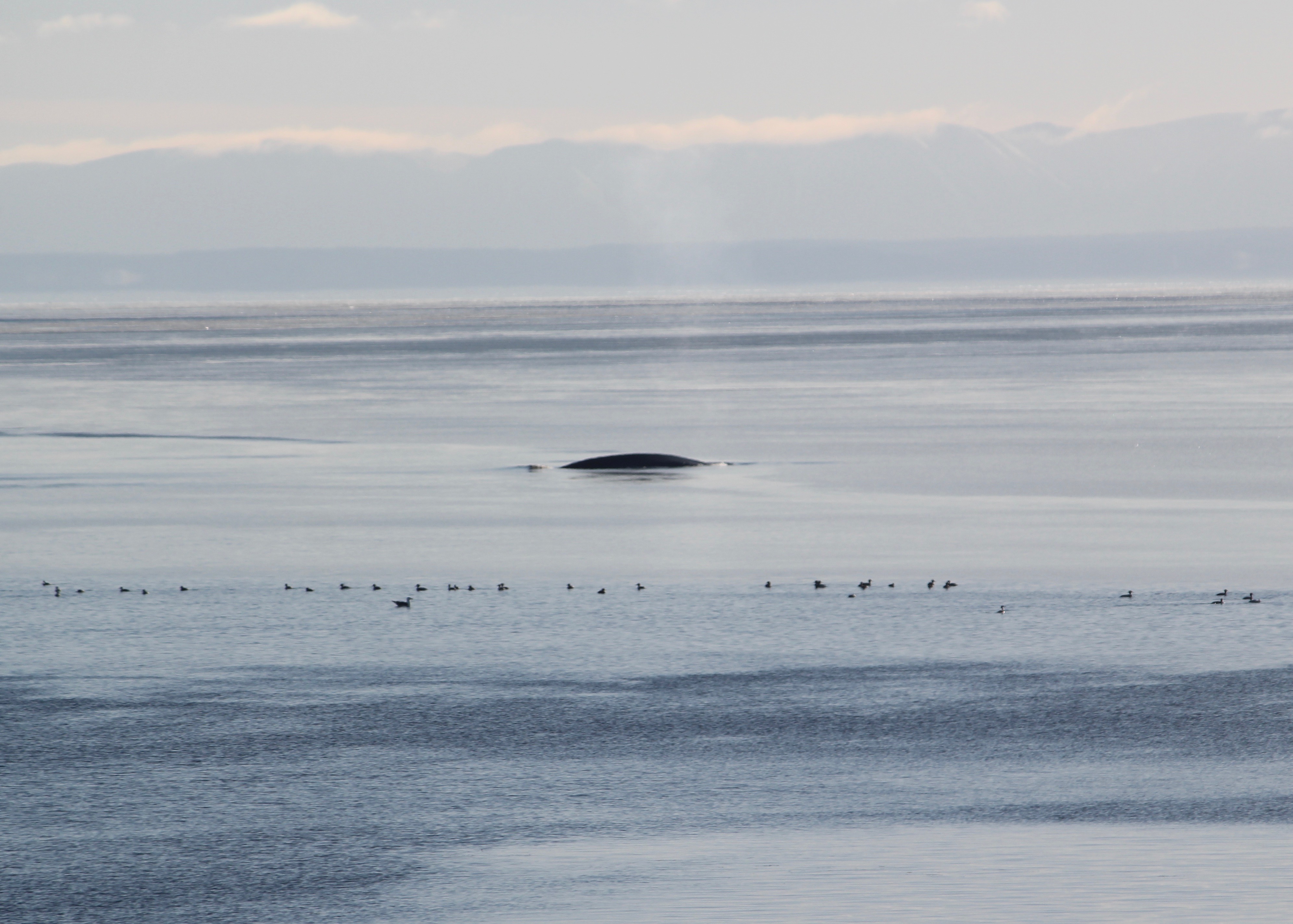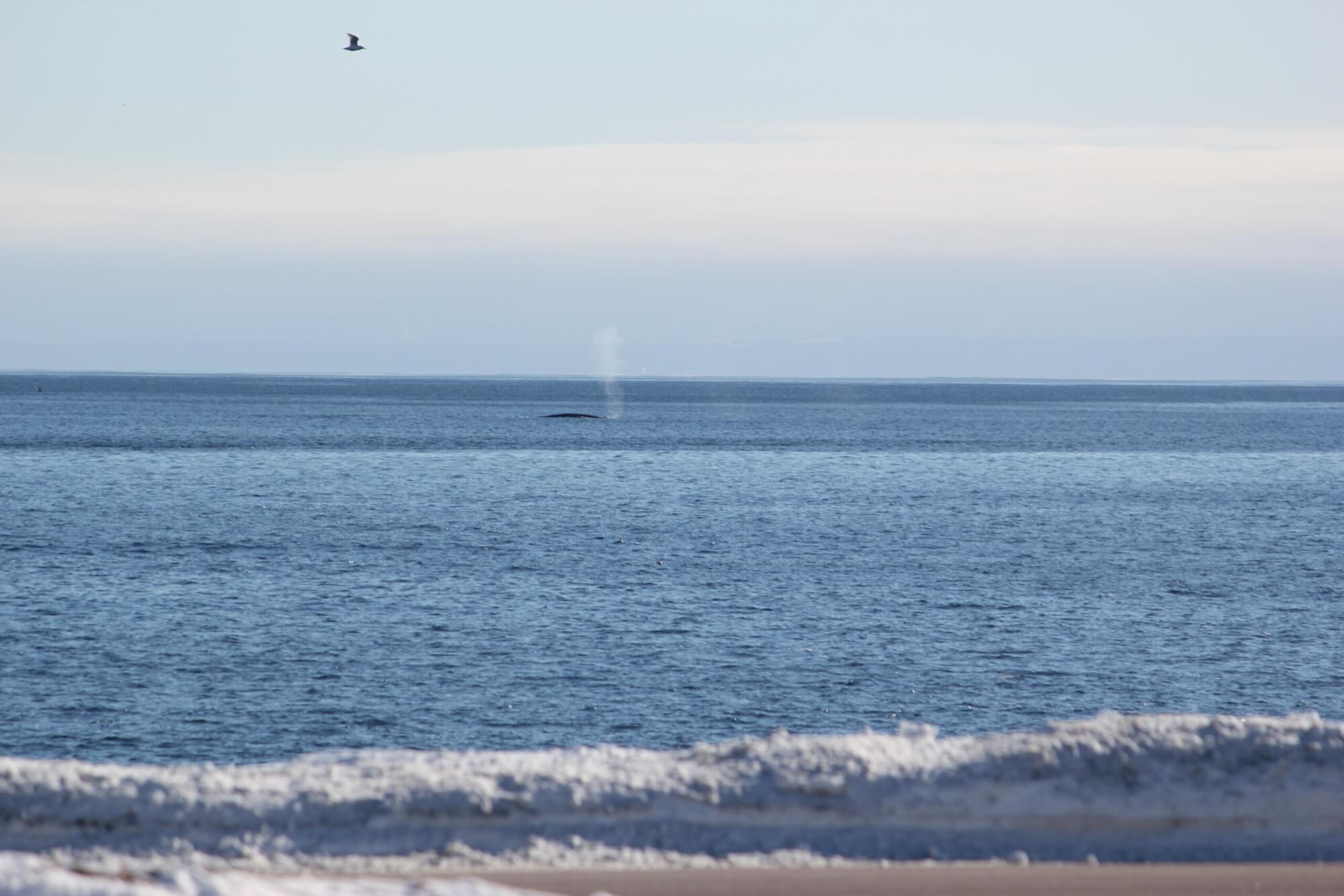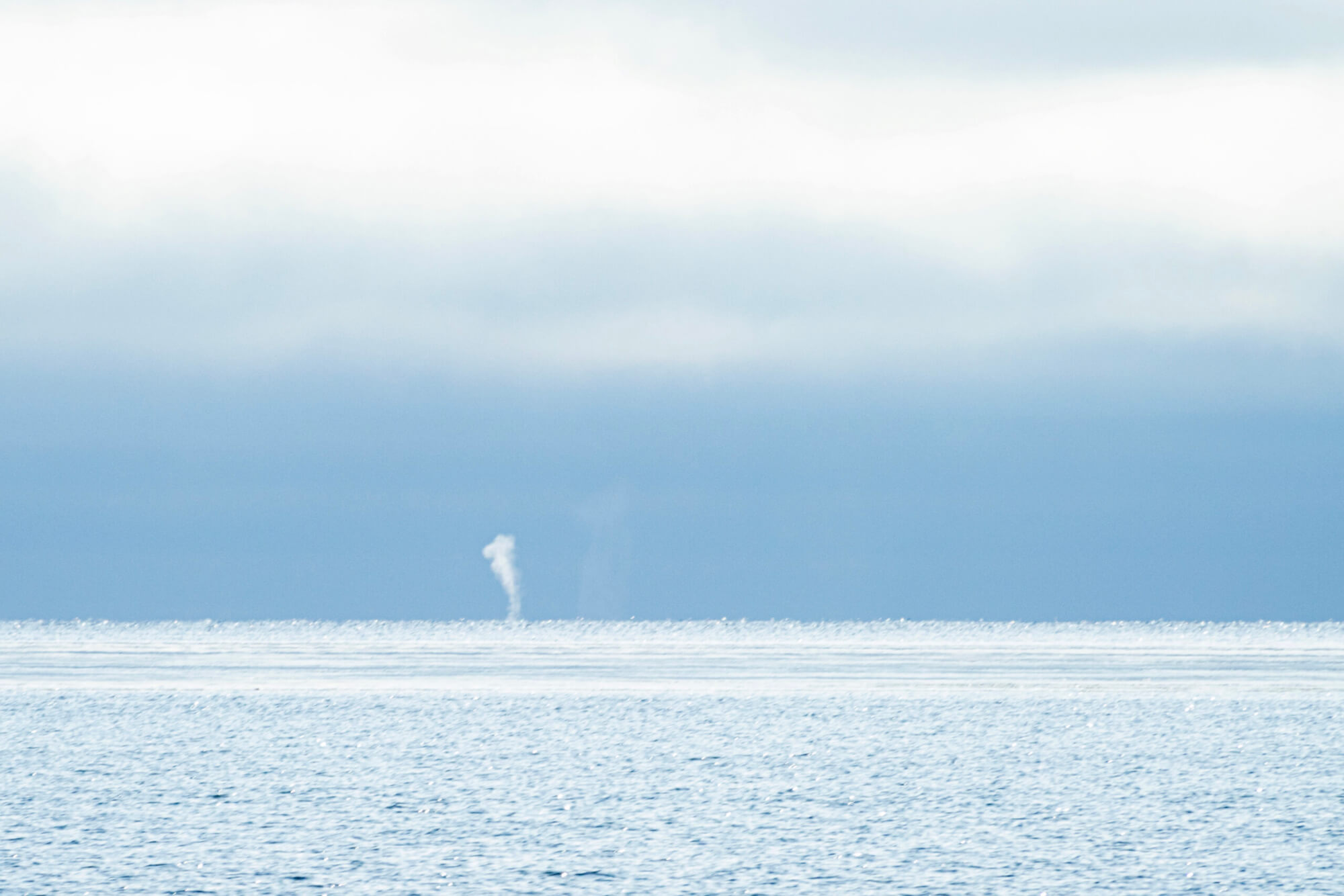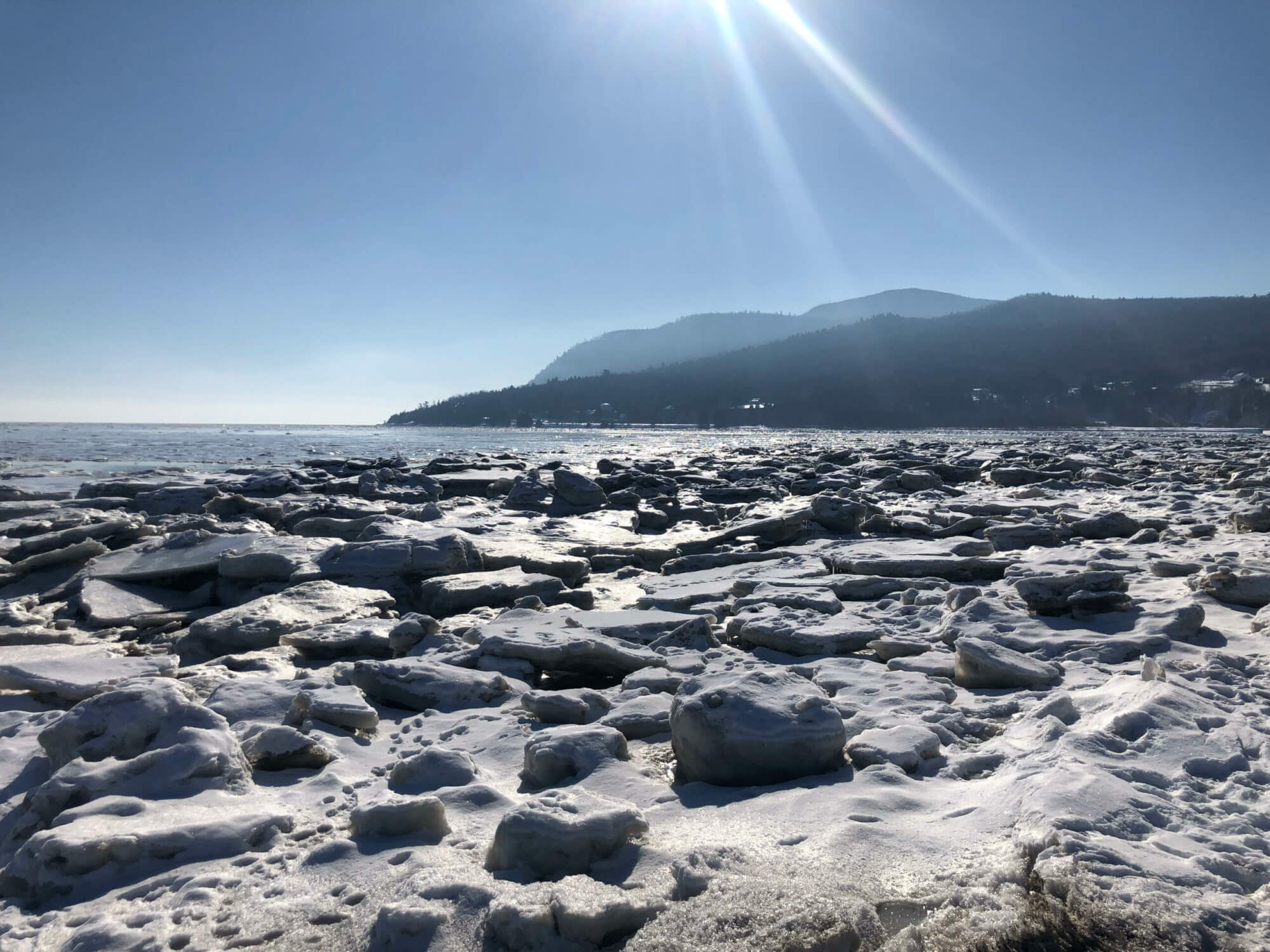Once again this week, blue whales have been on the prowl, with one spotted in Franquelin, others in Godbout and another report coming in from Gallix. The sightings keep pouring in, making it feel like summer in the middle of February, much to the delight of those who live on the North Shore!
Blue whales in Côte-Nord!
In Franquelin, a local resident spotted a blue whale several times this week. One day close to the coast, another day farther offshore, its powerful spout betrays its presence. Additionally, the blasts of another rorqual brightened up the day of February 6, even if the species could not be identified.
For several days now, large rorquals seem to be becoming more regular in Godbout. One was observed by a local looking out his window. Toward the end of the day, residents were even able to admire a large rorqual in the bay, not far from shore. Locals were thrilled to see whales roaming off the coast of their village. “In the morning, there was a pair of blue whales,” reports one citizen, “and another group of three clearly visible from town. They spent the better part of the morning feeding before leaving a little before noon, but early that afternoon I saw one swimming along the mountainous shoreline and was able to watch her until late in the day. I saw more whales yesterday than during the entire summer of 2023.” In the early morning of February 8, he spots four large spouts offshore between Godbout and Pointe-des-Monts.
It was during a morning stroll by the sea that one marine mammal enthusiast from Gallix was surprised by the sounds of a blue whale. “I was getting close to the shoreline and wow, what a nice surprise! Just on the horizon, I spotted a huge blast and a long back… it was a beautiful blue whale!” She takes the opportunity to capture the moment with her camera. After three breaths at the surface, the whale disappears into the depths. “I continued my stroll on the beach westward and, a half hour later, another spout farther west than the first one… no black back appeared however, but judging by the blast, it was surely a blue.”
Breathing in whales
From shore we can see a large spout erupting offshore and can even hear the animal breathing. The first breath is often the most powerful, as it has been quite a while since the whale last returned to the surface for oxygen. Trachea, larynx, nasal passage, blowhole… Exhalation expels the air in the lungs before the animal takes its next breath. Unlike humans, who replenish a mere 10 to 15% of air in their lungs with each breath, in whales this figure is 90%. That’s what we call efficient!
The winter sun
As for pinnipeds, a few individuals were observed swimming in the frigid waters of the St. Lawrence or resting on the beaches or on the ice farther offshore. In Les Escoumins, one resident observed harbour seals. “The ice is spreading on the river,” she explains, “winter is here!” A harp seal was also spotted from Cacouna.
Whether your walks under the winter sun are a chance to admire large spouts on the horizon, catch the eye of a distant seal or contemplate the quiet formation of ice from the beach, these sparkling white landscapes give winter a truly magical feel. These are the days when the rays warm us just enough to offset the sting of the cold, when we come home to snuggle up in our blankets, and when whales fill our imaginations. Whether through books, films, or memories of our past encounters with these impressive sea giants, we tell ourselves that it is worth the effort to conserve such forces of nature.
Thanks to all our collaborators!
Special thanks go out to all our observers who share their love for marine mammals with us! Your encounters with cetaceans and pinnipeds are always a pleasure to read and discover.
On the water or from shore, it is your eyes that give life to this column.
Laetitia Desbordes
Marie-Neige Dion
Diane Ostiguy
Renaud Pintiaux
Pascal Pitre
Andréanne Sylvain
Marielle Vanasse
J. Varin
And all those we left out!
Additionally, we would like to acknowledge the following teams that also share their sightings:
Mingan Island Cetacean Study (MICS)
Marine Mammal Observation Network (ROMM)
Quebec Marine Mammal Emergency Response Network (QMMERN)
Group for Research and Education on Marine Mammals (GREMM)
Would you also like to share your observations?
Have you seen any marine mammals in the St. Lawrence? Whether it’s a spout offshore or just a couple of seals, drop us a line and send your photos to [email protected]!








